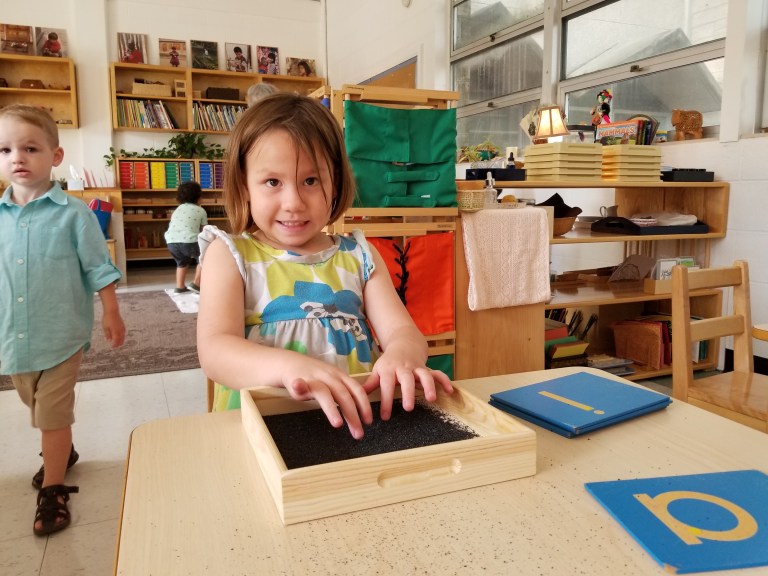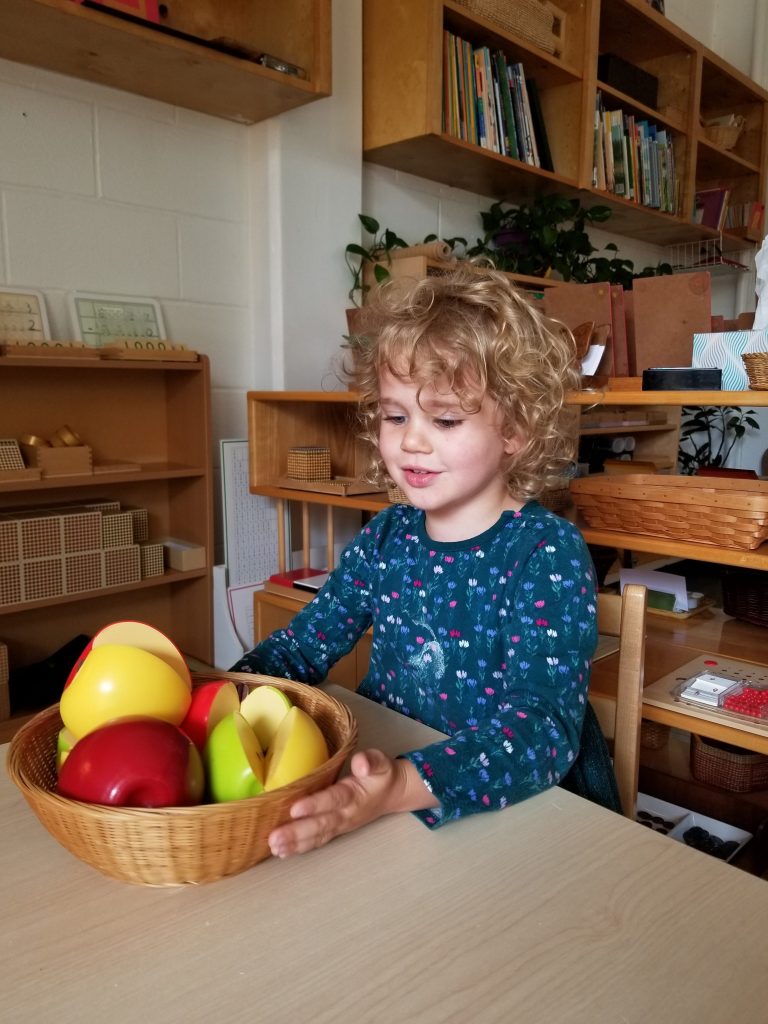I so enjoy the first day of school. Seeing all the bright, shining faces of students eager to learn and grow is a blessing that I am thankful for each year. For students (and sometimes parents) who have gotten into the looser routines of summer, starting a new school year can be a difficult change of pace. There are a few easy steps that we can do that helps bridge the summer-to-school gap and create a seamless transition into fall.
Helpful back to school tips, Montessori style
These tips, based in the Montessori Method, will help make your children fee l more confident and prepared as they start the new school year and prepare for new challenges and opportunities to learn and grow.
Independence – helping children help themselves helps to build confidence
In the words of Maria Montessori “….beyond a certain point every help given to a child is an obstacle to its development.” We encourage independence in children when we allow them to do things for themselves. Children are far more capable than we realize and there are so many opportunities in everyday tasks. Certainly, teaching children how to accomplish a task rather than just hurrying through it requires some patience but will have long lasting results.
The best opportunities are those which your child shows interest in so the next time your child says “I can do it” take time to foster his self-development. Knowing that they can achieve things themselves gives a sense of empowerment and builds up self-confidence. There are so many opportunities for children to help around the home with the daily chores. They might not accomplish them quite to your standards, but they will have learned value life lessons and feel like a contributing member of the family.

Allow Children freedom to make mistakes
Just like children need the opportunity to work independently they need uninterrupted time to experiment, make mistakes and repeat tasks to thoroughly learn the “lesson”. So when your child is engaged in a process give him the space to work alone, don’t hover and keep offering a constant stream of instructions. You can support your child by providing him with opportunities to repeat activities that interest him.
Repetition in learning is one of the most important fundamentals in child development. To support and reinforce this important building block of neurological connections, save up some extra patience for those days when your little one wants to the same task for the umpteenth time. Trust in your child’s internal development drive that repetition is what they need to learn and succeed.
Allow time for concentration and cut out distractions
Allowing time to focus helps to develop a longer attention span and teaches courtesy and respect. A myriad of things vie for your child’s attention so help to cut them out by turning off the TV, taking away other ‘screens” and minimizing the number of times we adult interrupts. During play time, don’t encourage them to pack away if they are in the middle of activity. Allow them as much time as possible to complete the activity.

Provide a sense of order
Most of our society thinks of children as impulsive and chaotic beings. Dr. Maria Montessori found, however, that even the youngest children display a need for and a sense of order in their environment. The infant needs the constancy of his mother’s and father’s faces; the toddler must have his “blankee” and favorite stuffed animals to go to sleep. Maria Montessori saw that a child’s environment is “like the sea to the fish and the air to the birds”. He is served best when the room in which the he spends most of his time remains constant in the location of his bed, toys, chair, etc.
To maintain the order in the home shelves must be access able and sized appropriately for children. Toys and clothes should be in containers that children can manipulate and in predictable places. Schedules contribute to order. Children are comfortable when they know what to expect and routines, such as consistent mealtimes and bedtimes can provide a sense of harmony.

Learn from Nature
Take time to smell the roses…slow down even if it is only for thirty minutes each day. In this Texas heat we get accustomed to staying indoors, but as things cool down go outside and play! Take walks, go the park, sit and watch birds or draw pictures. Let your child take photos or collect leaves and seeds, or whatever they discover. Talking about discoveries in nature is a great way to spark research.

